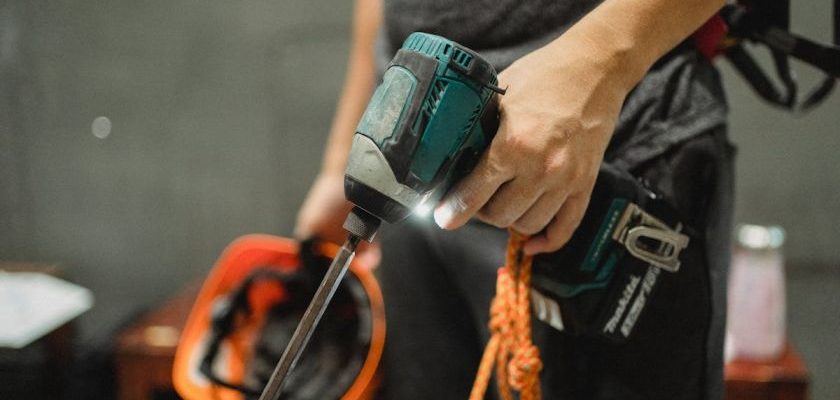In heavy industries, ensuring workplace safety is paramount to prevent accidents and protect the well-being of employees. From manufacturing plants to construction sites, the risks associated with heavy industries require specific strategies to enhance safety measures effectively. By implementing proactive safety protocols and fostering a culture of vigilance, organizations can create a safer work environment for their employees. Here are some key strategies to enhance workplace safety in heavy industries:
Establish Clear Safety Guidelines
The foundation of workplace safety in heavy industries is the establishment of clear safety guidelines. These guidelines should outline the specific safety protocols and procedures that employees need to follow to minimize risks. Providing comprehensive training sessions to familiarize workers with safety guidelines is crucial. Regular updates to these guidelines based on industry best practices and regulatory requirements should also be a priority.
Implement Regular Safety Inspections
Regular safety inspections are essential to identify potential hazards and ensure compliance with safety regulations. By conducting routine inspections of equipment, machinery, and work areas, organizations can proactively address safety issues before they escalate into accidents. Encouraging employees to report any safety concerns they observe during their work shifts can also help in identifying and resolving safety hazards promptly.
Promote a Safety-First Culture
Creating a safety-first culture where safety is prioritized above all else is vital in heavy industries. Employers should encourage open communication channels where employees feel empowered to voice their safety concerns without fear of reprisal. Recognizing and rewarding employees who demonstrate a commitment to safety can further reinforce the importance of workplace safety within the organization.
Provide Personal Protective Equipment (PPE)
Personal protective equipment (PPE) plays a crucial role in safeguarding employees against workplace hazards in heavy industries. Employers should ensure that appropriate PPE is provided to workers based on the specific risks associated with their roles. Regular maintenance and replacement of PPE should also be part of the safety protocols to guarantee its effectiveness in protecting employees.
Invest in Ongoing Safety Training
Continuous safety training is key to keeping employees informed about the latest safety procedures and best practices. By investing in ongoing safety training programs, organizations can equip their employees with the knowledge and skills needed to navigate potential risks effectively. Training sessions should cover topics such as emergency response protocols, hazard recognition, and safe work practices.
Encourage Active Participation in Safety Committees
Establishing safety committees comprising both management and employees can be an effective way to involve stakeholders in shaping safety initiatives. Encouraging active participation in safety committees allows for the exchange of ideas, feedback, and insights on improving workplace safety. Collaborative efforts between management and employees can lead to the implementation of more robust safety measures tailored to the specific needs of the organization.
Embrace Technology for Safety Monitoring
Advancements in technology have revolutionized safety monitoring in heavy industries. Employing tools such as IoT sensors, wearable devices, and real-time monitoring systems can provide valuable data insights to enhance safety measures. Leveraging technology for safety monitoring enables organizations to identify potential safety risks in real-time and take proactive measures to mitigate them.
Prioritize Emergency Preparedness
Emergency preparedness is a critical aspect of workplace safety in heavy industries. Developing comprehensive emergency response plans and conducting regular drills to practice emergency procedures can help employees respond effectively in crisis situations. Ensuring that all employees are familiar with evacuation routes, emergency contacts, and first aid procedures is essential to minimizing the impact of emergencies on workplace safety.
Incorporate Safety Incentives
Incentivizing safety practices through recognition programs or rewards can motivate employees to prioritize safety in their daily work routines. By acknowledging and rewarding safe behaviors, organizations can reinforce a culture of safety consciousness among employees. Safety incentives can range from monetary rewards to public recognition, depending on the organization’s resources and preferences.
Conclusion:
By implementing a combination of these strategies, organizations in heavy industries can significantly enhance workplace safety and create a culture where safety is a top priority. Prioritizing safety guidelines, fostering a safety-first culture, providing adequate PPE, investing in ongoing training, encouraging active participation in safety committees, embracing technology for safety monitoring, prioritizing emergency preparedness, and incorporating safety incentives are crucial steps toward ensuring a safe and secure work environment for all employees. Ultimately, a proactive approach to workplace safety not only protects employees from harm but also contributes to the overall success and sustainability of heavy industries.

